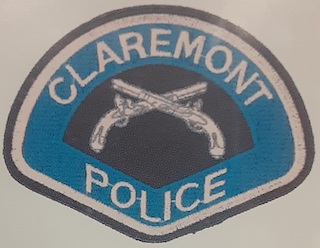If you or a family member have been arrested by or are under investigation by the Claremont Police Department, it can be helpful to know more than just what the elements (requirements) of the crime or crimes at issue are, what the defenses are and what the punishment limits are.
We at Greg Hill & Associates know it can be helpful to know a bit about the specific police department (how big it is, when it began operating, i.e.) and the history of the cities or cities that the police department has jurisdiction over, to put the crime at issue in context of how it is regarded by the that police department and possibly prosecuted by the Los Angeles County District Attorney’s Office.
Claremont traces its history back to 1771, when the Spanish period in California began. Mission San Gabriel’s lands stretched eastward to what is now Claremont. The mission’s land also stretched southward all the way to the San Pedro bay, now known at the Los Angeles Harbor.
After the mission was secularized by the Mexican government in 1834, the native Tongva-Gabrielino Indians continued to work for the Spanish settlors until smallpox decimated their numbers in 1862 and 1873.
In January 1887, the Santa Fe Railroad provided the push needed for Claremont to be recognized as its own city. Claremont was just one of about thirty town sites planned for the railroad to serve between San Bernardino and Los Angeles in anticipation of a population explosion resulting from the arrival of the railroad.
 Claremont Police Patch
Claremont Police Patch
However, the real estate boom was short-lived. Not many people settled in Claremont. It would have become one of a long list of local railroad "ghost towns" if not for the decision of the local land company to transfer its Hotel Claremont and 260 vacant lots to the recently-founded Pomona College in 1888.
Pomona College wanted to be known as a school of "the New England style," and the community that grew up around it also reflected the founders' New England aspirations. Even the form of local government they used, the Town Meeting, was brought with them from their hometowns in the East. Both the citizen involvement and the volunteerism on which the town meeting form of government is based continue to be hallmarks of Claremont today.
Beginning in 1904, there was talk of incorporating as a city. People who advocated this did not want to rely on Los Angeles County for services, while opponents warned the community's weak tax base would result in bankruptcy in less than a year.
Finally, after much debate, an election on the incorporation question was held on September 23, 1907. Nearly 95 percent of Claremont's 131 eligible voters went to the polls. Incorporation was approved by a vote of 73 to 49, and the City of Claremont was officially incorporated on October 3, 1907.
At the same time the colleges were growing and expanding, so was the local citrus industry. Citrus ranches spread out across all the foothill communities. Claremont’s citrus growers established one of the earliest citrus cooperatives for marketing and shipping citrus fruit, a model that led to the organization of the Sunkist cooperative. At its height, the industry supported four citrus packing houses, an icehouse, and a precooling plant along the railroad tracks in Claremont.
Labor for the citrus industry was predominately provided by Mexican Americans, often immigrants from Mexico. Men served as pickers while women worked in the packing houses.
By 1920, Mexican labor contributed greatly to the early construction of the Claremont Colleges, including skilled crafting of many stone structures and ornamental features.
Citrus continued to flourish in the area until after the Second World War. That is when the pressure for residential development (originally envisioned by the Santa Fe railroad) caused many growers to sell their land for housing tracts.
The opening of the San Bernardino Freeway in 1954 also made it much easier for people not associated with citrus or the Colleges to live in Claremont. The city, which covered about 3.5 square miles at its incorporation in 1907, now covers more than 13 square miles with a population of over 34,000 residents.
The early Spanish, college, and citrus industry influences can still be seen in the community today. Lush citrus and oak groves remain and serve as a physical reminder of Claremont's Spanish heritage and college-town influence. Claremont’s architecture reflects various architectural periods, particularly Victorian, neo-Classical Revival, Craftsman, and Spanish Colonial Revival. This diversity, sense of scale, and continuity singles it out as a unique community in Southern California.
570 W. Bonita Avenue
Claremont, CA 91711
Los Angeles County
Shelly Vander Veen, Police Chief
(909) 626-1296 or 911
Emergency Calls
(909) 399-5411
Non-Emergency Calls / General Information
For more information about being arrested and possibly facing a criminal case, please click on the following articles:
Below is the Google Map to the Claremont Police Department.
 Claremont Police Patch
Claremont Police Patch